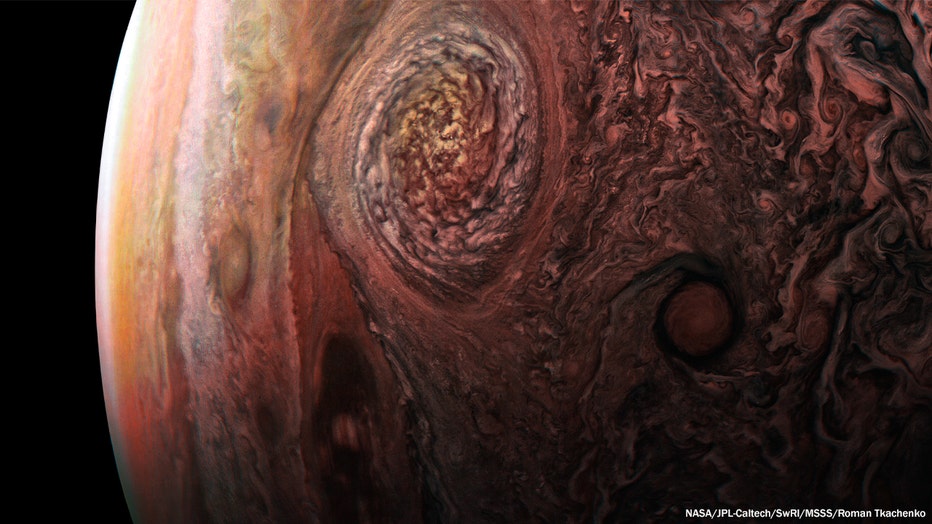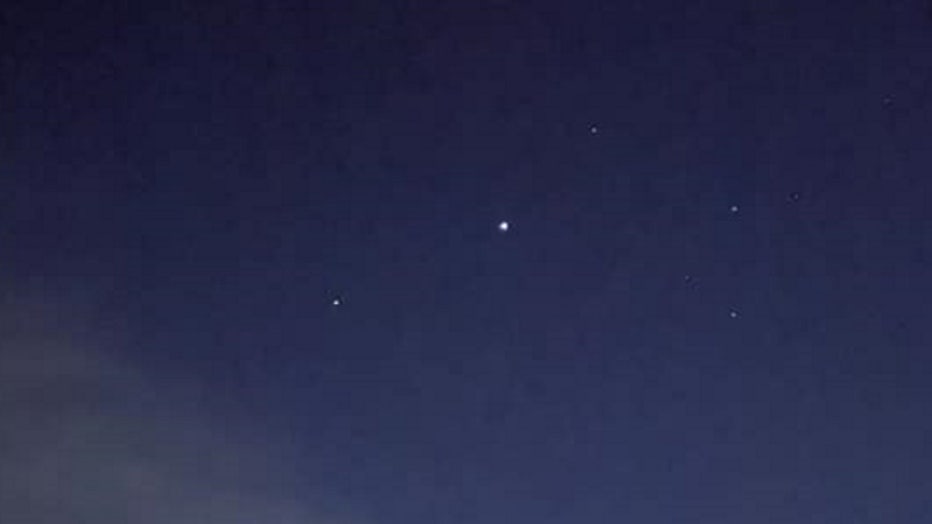Jupiter and Saturn to align in the sky this month as 'Christmas Star'
Seen in this photograph is the beautiful spiral arm of our galaxy; stars of the constellation Libra, constellation Scorpius, Planet Jupiter (Bright Spot at the Center) & Majestic Saturn at 8 o'clock of Jupiter. This photo was taken at Varasgaon d
The two largest planets in the solar system, Jupiter and Saturn, have fascinated astronomers for hundreds of years. But the two gas giants will do something next month not seen since the Middle Ages -- they will look like a double planet.
The rare occurrence will happen after sunset on Dec. 21, 2020, the start of the winter solstice.
“Alignments between these two planets are rather rare, occurring once every 20 years or so, but this conjunction is exceptionally rare because of how close the planets will appear to one another,” said Rice University astronomer Patrick Hartigan in a statement. “You’d have to go all the way back to just before dawn on March 4, 1226, to see a closer alignment between these objects visible in the night sky.”
RELATED: China successfully lands spacecraft on moon to bring rocks back to Earth
Between Dec. 16 and Dec. 25, the two planets will be separated by less than a full moon, Hartigan added.

A photo of Jupiter taken from 7,145 miles away by NASA's JunoCam (NASA / JPL-Caltech / SwRI / MSSS / Roman Tkachenko).
“On the evening of closest approach on Dec. 21 they will look like a double planet, separated by only fifth the diameter of the full moon,” Hartigan explained. “For most telescope viewers, each planet and several of their largest moons will be visible in the same field of view that evening.”
Back in 1614, German astronomer Johannes Kepler suggested that a conjunction of Jupiter and Saturn may be what was referred to as the "Star of Bethlehem" in the Nativity story, while others have suggested that the "three wise men" could have been a triple conjunction of Jupiter, Saturn and Venus. But it's unknown if the “Christmas Star” was a real astronomical event, like a planetary conjunction or a comet.
RELATED: Damaged Arecibo radio telescope in Puerto Rico collapses
This month's celestial event can be observed anywhere on earth, but Hartigan noted the farther north someone is, "the less time they have to catch a glimpse."

Jupiter and Saturn in the night sky over Broward County, Florida, on July 28, 2020. (WTVT)
NASA says the conjunction will appear "spectacular" with a backyard telescope or even with the naked eye.
Stargazers should try to see the event next month or risk waiting a long time for the next occurrence. The two planets won't be this close to each other again until March 15, 2080, and sometime after the year 2400, Hartigan explained.
FOX News contributed to this report.

